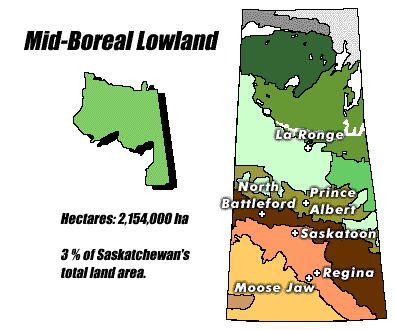|
Climate:
| Total annual precipitation (mm) |
452 |
| Annual snowfall (cm) |
170 |
| Water deficit (mm) |
169 |
| Mean July temperature (C) |
+17.7 |
| Mean January temperature (C) |
-21.4 |
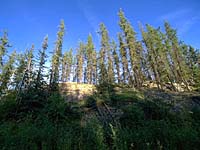
The climate is subhumid and cool. The region is subject to late
spring and late fall frosts. The summers are short and cool, the
winters are long and cold. In the Cumberland Delta, hills to the
south, expanses of water, increased precipitation and lower elevation
create a microclimate different than the climate of the surrounding
provincial forest. The moderating effect of this area supports
tree species that are more similar to a southern Manitoba ecosystem.
| |
Landscape:
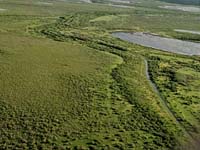
The Saskatchewan River in the Cumberland lowlands has formed an
extensive delta. The Pasquia Hills Uplands to the south are high
and rolling, dissected by the streams carrying water off the plateau.
|
![[ V F T ]](../../media/stuff/vft_spin.gif)
GPS: 53d 55.16m N, 102d 17.67m W, 705 feet
12 July 96, 12:30 pm, Fuji Velvia 50, F8 1/100s
![[ V F T ]](../../media/stuff/vft_spin.gif)
GPS: 53d 38.91m N, 101d 59.91m W, 1053 feet
16 July 96, 11:50 am, Fuji Velvia 50, F11 1/60s
![[ V F T ]](../../media/stuff/vft_spin.gif)
GPS: 54d 29.92m N, 104d 09.73m W, 1422 feet
14 August 96, 5:30 pm, Fuji Velvia 50, F11 1/60s
![[ V F T ]](../../media/stuff/vft_spin.gif)
GPS: 53d 39.65m N, 102d 00.51m W, 1024 feet
16 July 96, 12:50 pm, Fuji Velvia 50, F11 1/60s
Vegetation:
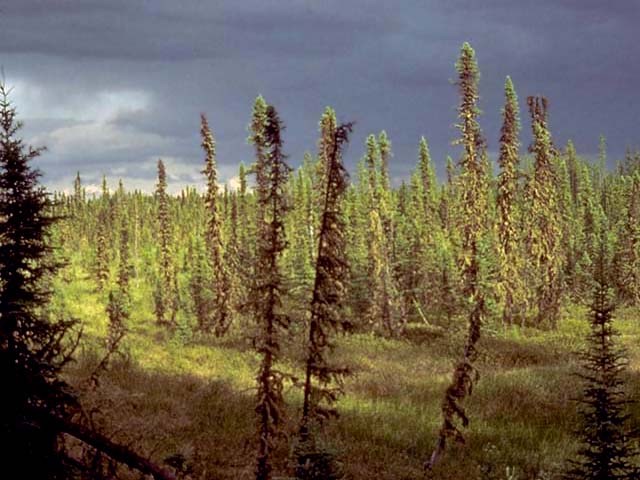
This ecoregion is characterized by medium-tall closed stands of
trembling aspen and balsam poplar, with white
spruce, balsam fir, and black spruce occurring in late successional stages. Poorly drained depressions are dominated
by stunted dwarf birch and black spruce with peat moss Labrador
tea and sedges. The rich deciduous forests on river deposited
soil, support luxuriant stands of ostrich fern and horsetail.
This ecoregion has the most diverse flora in the province. In
the Cumberland Delta, white elm, green ash and Manitoba
maple can be found.
|
Wildlife:
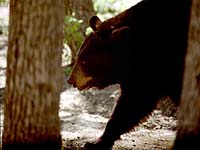
The moose population is the highest
in Saskatchewan. Black bear (shown left) are also common. Low populations of
white-tailed deer and elk are present. The Cumberland marshes
are important as waterfowl habitat and for muskrat production.
Bird diversity is high. There are a large number of barred owls,
associated with the mature balsam poplar forests. Black-throated
and blue warblers found here are rarely seen elsewhere in the
province.
|
Human Use:
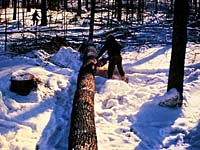
Forestry is the most important land use. White spruce and balsam
poplar stands generate the highest timber yields in the province.
Fishing, trapping, seasonal hunting are other resource
uses. Some ranching occurs along with the growing of forage
crops and vegetables.
|
|

![]()
